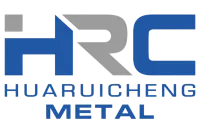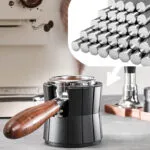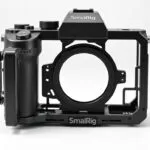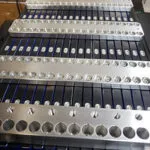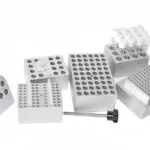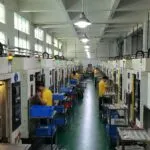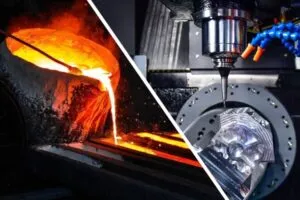Differences Between ADC12 and 6061 Aluminum
In the large family of aluminum alloys, ADC12 and 6061 aluminum play important roles in numerous fields with their unique properties. Although they both belong to aluminum alloys, there are significant differences in composition, properties, and applications. Understanding these differences helps us make more appropriate material choices in various industrial scenarios and daily applications.
Alloy Composition Comparison
The properties of aluminum alloys largely depend on their alloy compositions. ADC12 is a die-casting aluminum alloy according to the Japanese standard. Its main alloying elements include silicon (Si), copper (Cu), magnesium (Mg), zinc (Zn), etc. Among them, the silicon content is relatively high, usually between 9.5% – 12.0%, and the copper content is about 1.5% – 3.5%. The high silicon content improves the fluidity of the alloy, making it more suitable for die-casting processes. The copper element helps to enhance the strength and hardness of the alloy.
6061 aluminum alloy belongs to the wrought aluminum alloy series. Its main alloying elements are magnesium (Mg) and silicon (Si), with a magnesium content of 0.8% – 1.2% and a silicon content of 0.4% – 0.8%. In addition, it also contains small amounts of copper, chromium, and other elements. This combination of compositions endows the 6061 aluminum alloy with good workability and corrosion resistance.
| Alloy Type | Main Alloying Element Content (%) | Other Elements |
| ADC12 | Si: 9.5 – 12.0Cu: 1.5 – 3.5Mg: 0.3 – 0.6 | Zn: 0.5 – 1.5, etc. |
| 6061 | Mg: 0.8 – 1.2Si: 0.4 – 0.8 | Cu: 0.15 – 0.4Cr: 0.04 – 0.35 |
[Insert a pie chart here showing the proportion of alloying elements in the two alloys]
Mechanical Properties Comparison
Mechanical properties are important indicators for measuring the performance of aluminum alloy materials. Due to its high silicon and copper content, ADC12 has good strength and hardness in the as – cast state. Its tensile strength is generally between 230 – 300MPa, and the hardness can reach HB60 – 90. However, the elongation of ADC12 is relatively low, about 1% – 3%, which means it has poor plasticity and is prone to brittle fracture when stressed.
After heat treatment (such as T6 treatment), the mechanical properties of 6061 aluminum alloy are significantly improved. Its tensile strength can reach 290 – 310MPa, the yield strength is about 240MPa, and the elongation can reach 12% – 17%. This enables the 6061 aluminum alloy to maintain high strength while also having good plasticity and being able to withstand a certain degree of deformation without fracture.
| Alloy Type | Tensile Strength (MPa) | Yield Strength (MPa) | Elongation (%) | Hardness (HB) |
| ADC12 | 230 – 300 | – | 1 – 3 | 60 – 90 |
| 6061 (T6 treatment) | 290 – 310 | 240 | 12 – 17 | – |
Workability Comparison
In terms of workability, ADC12 and 6061 aluminum alloys also show obvious differences. ADC12 is very suitable for die-casting processes due to its good fluidity. Die-casting is an efficient forming method that can produce parts with complex shapes and high dimensional accuracy. Through die-casting, ADC12 can be quickly formed, greatly improving production efficiency. However, due to its poor plasticity, when ADC12 is subjected to machining (such as cutting, drilling, etc.), attention needs to be paid to the selection of tools and the adjustment of cutting parameters to avoid machining defects.
6061 aluminum alloy belongs to the wrought aluminum alloy, with good workability. It can be made into various profiles, such as aluminum plates, aluminum bars, and aluminum tubes, through various processing methods such as extrusion, forging, and rolling. During machining, 6061 aluminum alloy has good machinability and can obtain high surface quality and dimensional accuracy. At the same time, due to its good plasticity, 6061 aluminum alloy can also be formed by bending, stretching, etc., to meet different design requirements.
[Insert a comparison chart here of ADC12 die-casting and 6061 aluminum alloy extrusion]
Application Field Comparison
Due to the differences in performance, ADC12 and 6061 aluminum alloys also have different focuses in application fields. ADC12 is mainly used in the manufacture of parts with high requirements for strength and hardness and complex shapes. For example, automotive engine blocks, transmission cases, motorcycle wheels, etc. These parts need to withstand large pressures and impacts during operation, and the high strength and good casting properties of ADC12 make it an ideal choice.
6061 aluminum alloy is widely used in aerospace, construction, electronics, and other fields. In the aerospace field, the high strength, low density, and good corrosion resistance of 6061 aluminum alloy make it an important material for manufacturing aircraft structural parts and engine components. In the construction field, 6061 aluminum alloy is often used to manufacture doors, windows, curtain walls, and building decoration materials. Its good workability and corrosion resistance can meet the diverse needs of the construction industry for materials. In the electronics field, 6061 aluminum alloy can be used to manufacture the shells and heat sinks of electronic products, ensuring the strength and heat dissipation performance of the products while reducing their weight.
[Insert a mind -map here showing the application fields of the two alloys]
Conclusion
Although both ADC12 and 6061 aluminum alloys belong to aluminum alloys, there are obvious differences in alloy composition, mechanical properties, workability, and application fields. ADC12 is suitable for die-casting and is used to manufacture high-strength and complex-shaped parts; while 6061 aluminum alloy has good workability and comprehensive properties and is widely used in many fields such as aerospace, construction, and electronics. In practical applications, we should reasonably select the appropriate aluminum alloy material according to specific usage requirements and working conditions to give full play to its performance advantages and improve the quality and reliability of products.
